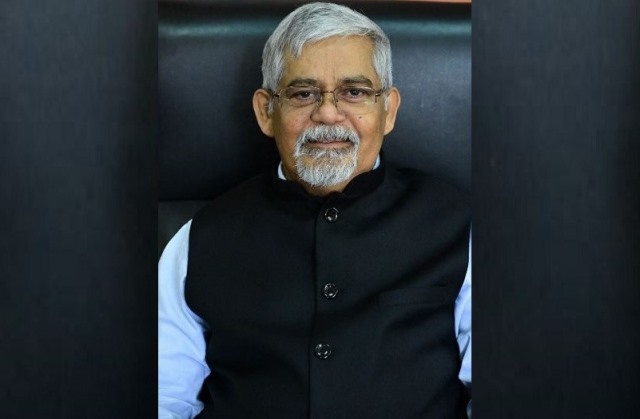Prof Muzaffar Assadi, who teaches Political Science and is Dean, Faculty of Arts in University of Mysore, analyses the forthcoming electoral battle in Karnataka. His views:
I concur that the coastal region in Karnataka is considered a testing ground for Hindutva politics. It is also true that the forces of Hindutva have made every effort to incite communalism in many regions of Karnataka, especially in the region that serves as the cradle of the Vokkaligas— Old Mysore. But they were unable to do so.
They used trajectories like azaan, halal and darghah, as well as fabricated two fictional characters like Uri Gowda and Nanjegowda, who, allegedly, killed Tipu Sultan, the Tiger of Mysore, in the final battle of Mysore. They also tried to boycott Muslim businesses, trade, etc., but they failed terribly. This failure has historical as well as modern causes, including the fact that Old Mysore never served as a hub for communalism, and it has no memory of the Partition or any of the ensuing relocation, violence, rape, etc. It has not also seen any conversions that were forced.
It’s interesting that Hindutva had to rely on a single Muslim ruler, Tipu, to construct a narrative about communalism. The most crucial factor is that there has been no Muslim backlash in Old Mysore. The entry of the Vokkaliga Pontiff, who, figuratively, prevented the Hindutva forces from spreading their tentacles, is another significant factor behind their inability to convert the ‘Heartland of Vokkaligas’. Hindutva in Old Mysore exploited powerful caste figures, especially to promote its narrative. This test has been unsuccessful once again.
However, the coastal belt is distinct. In the middle of growth and economic development, it is a region with a reputation for communalism. In the end, the adoption of the capitalist path of development after the 1970s, particularly after the implementation of land reforms, skyrocketing oil prices, opening up of the middle-eastern economy, the linking of local economy with the Bombay metropolis economy, etc., paved the way for competitive communalism long before the Ayodhya movement could establish itself in the coastal belt. It is paradoxical that the rise of communism and capitalism coexisted without annihilating one another.
Hindutva’s use of hate-based tactics is a continuation of its prior aim to control the local economic and socio-cultural spaces. Hate politics has been successful, but it has not been able to take over the local economy.
Minorities are still essential to its survival. Because of this, minority institutions like hospitals, universities, engineering colleges and public convent schools, are not the targets; instead, the narrative is constructed using a soft target! Its victims include women (hijab), butchers (halal), fishermen and small business-owners.
It is hardly unexpected that the coastal belt continues to be the base for Hindutva and the BJP, and its political affiliates, notwithstanding the anti-incumbency factor. Hindutva has strengthened its base through a set of caste-coalitions. The 3Bs — Bunts, Billavas and Brahmins — may be used to describe the coalition. Here lies the hierarchy — Brahmins as ideologues, Bunts as auxiliaries and Billavas as its foot-soldiers.
ALSO READ: BJP Fight For Karnataka May Go Down To The Wire
Despite the fact that the BJP has used a variety of tactics to stop the erosion of its support base, this time it will not be a cakewalk for the party. That the BJP has never achieved an absolute majority to form a government of its own is also true. ‘Operation Kamala’ was previously used, for the first time, to make Congress and JD(s) members defect, in order to form the government.
It is attempting to implement the ‘Gujarat Model’ by removing 82 incumbent MLAs, which, has given rise to discontent and defections. The BJP has tried to marginalize leading members of the dominant castes of Lingayats and Vokkaligas and has ended up in creating a ‘hurt psyche’. This will have an effect on the BJP’s social base, known as LIBRA — Lingayats and Brahmins — in North Karnataka. Not all Lingayats will switch their allegiance to the Congress, but, even a 10 per cent shift can significantly reduce the BJP’s chances of capturing power.
The anti-incumbency factor, the ‘Pay-CM’ narrative, the 40 per cent kickback narrative, the ‘Nandini/Amul’ controversy, the mistreatment of Lingayat leaders, including the marginalisation of the dominant castes, and its policy of stifling reservation to minorities, among other things, would undoubtedly help the Congress. There is a widespread belief that the Congress would benefit from Siddaramaiah’s clean image as the leader of the opposition who has minced no words to oppose Hindutva, along with the populist agenda he has initiated for the urban and rural poor.
Will Congress be able to form a government on its own? It hinges on its ability to survive ideological assaults, its demonstration of social commitment, its narrative about the victimisation of its leaders, its portrayal of leadership unity, and, eventually, its ability to forge an inclusive social coalition.
A few expectations have been articulated. One, a stable government at the helm for five years without any defection or falling prey to Operation Kamala; two, clean and good governance — addressing the issues of common man without nepotism, red-tapism, casteism; three, continuing the same populist programmes such as Anna Bhagya, Ksheera Bhagya etc; four, upholding the Kannada and regional identity vis-à-vis the Hindutva identity and cultural nationalism; and, lastly, bringing back the notion of a ‘cohesive society’ in the midst of growing communalism.
The narrator is writer of an upcoming book Colonial and Post-Colonial Identity Politics in South Asia: Zaat/Caste Among Muslims (Routledge).
As told to Amit Sengupta
